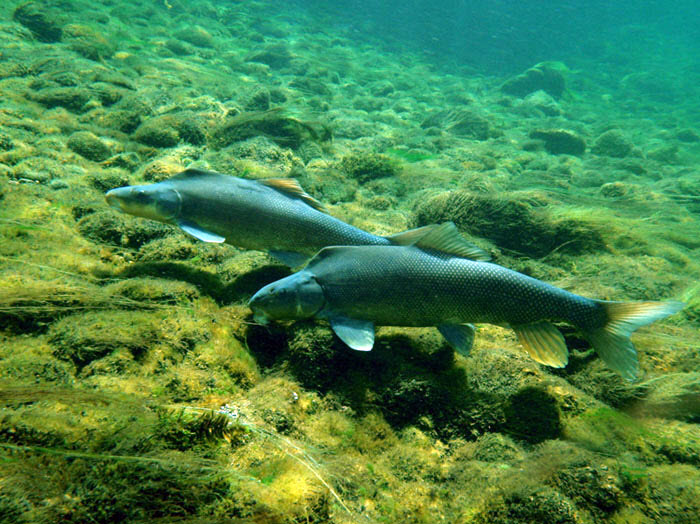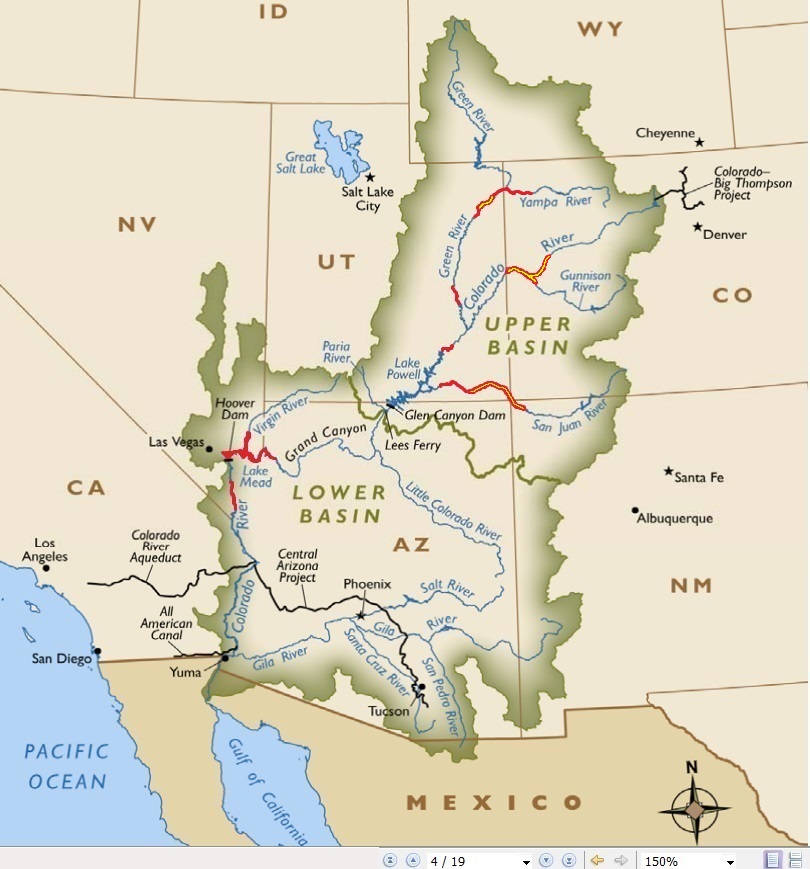Difference between revisions of "GCDAMP RAZU Fish"
Cellsworth (Talk | contribs) |
Cellsworth (Talk | contribs) |
||
| (6 intermediate revisions by the same user not shown) | |||
| Line 60: | Line 60: | ||
|- | |- | ||
|style="color:#000;"| | |style="color:#000;"| | ||
| − | |||
| − | |||
| − | |||
| − | |||
| − | |||
| − | |||
| − | |||
| − | |||
| − | |||
| − | |||
| − | |||
| − | |||
| − | |||
| − | |||
| − | |||
| − | |||
| − | |||
| − | |||
| − | |||
| − | |||
| − | |||
| − | |||
| − | |||
| − | |||
| − | |||
==Status and distribution== | ==Status and distribution== | ||
| Line 166: | Line 141: | ||
|- | |- | ||
|style="color:#000;"| | |style="color:#000;"| | ||
| + | |||
| + | '''2023''' | ||
| + | *[[Media:2023 Biowest Razorback Sucker Monitoring Annual Report.pdf| Razorback Sucker Xyrauchen texanus Research and Monitoring in the Colorado River Inflow Area of Lake Mead and the Lower Grand Canyon, Arizona and Nevada 2023 FINAL ANNUAL REPORT]] | ||
| + | |||
| + | '''2022''' | ||
| + | *[https://www.usbr.gov/uc/progact/amp/twg/2022-10-13-twg-meeting/20221013-AssessmentPotentialAugmentationManagementStrategiesRazorbackSucker-508-UCRO.pdf HIGHLIGHTS OF: Assessment of Potential Augmentation and Management Strategies for Razorback Sucker Xyrauchen texanusin Lake Mead and Grand Canyon: A 2021 Science Panel Summary ] | ||
| + | *[[Media:Razorback Sucker Monitoring Annual Report 2022.pdf| Razorback Sucker Xyrauchen texanus Research and Monitoring in the Colorado River Inflow Area of Lake Mead and the Lower Grand Canyon, Arizona and Nevada 2022 FINAL ANNUAL REPORT]] | ||
| + | |||
| + | '''2021''' | ||
| + | *[https://www.usbr.gov/uc/progact/amp/twg/2021-01-22-twg-meeting/20210122-TWGMeeting-LTEMPBiologicalOpinionConservationMeasuresUpdate-508-UCRO.pdf Long-Term Experimental and Management Plan Biological Opinion Conservation Measures Update ] | ||
| + | |||
| + | '''2019''' | ||
| + | *[https://www.usbr.gov/uc/progact/amp/twg/2019-05-01-twg-meeting/20190501-RazorbackSuckerSSA5-yearReview-Presentation-508-UCRO.pdf Razorback Sucker SSA and 5-year Review Presentation ] | ||
| + | *[https://www.usbr.gov/uc/progact/amp/amwg/2019-03-06-amwg-meeting/20190306-ProposedDownlistingHumpbackChubRazorbackSuckerUpdate-Presentation-508-UCRO.pdf Proposed Downlisting of the Humpback Chub and Razorback Sucker Update] | ||
'''2018''' | '''2018''' | ||
| Line 231: | Line 220: | ||
*[[Media:Razorback Sucker- LStevens.m4a|Audio]] | *[[Media:Razorback Sucker- LStevens.m4a|Audio]] | ||
*[[Razorback Sucker- EP| Script ]] | *[[Razorback Sucker- EP| Script ]] | ||
| + | |||
| + | ---- | ||
| + | |||
| + | *Larvae collected as far upstream as Havasu Creek [https://www.usbr.gov/uc/rm/amp/twg/mtgs/18jan25/AR19.pdf] | ||
| + | *Radio-tagged adult migrated upstream from Diamond Creek to just below Bright Angel Creek (2016) [https://www.usbr.gov/uc/rm/amp/twg/mtgs/18jan25/AR19.pdf] | ||
| + | *[http://biographic.com/posts/sto/in-search-of-suckers High Country News: Canyon’s depths—but will the razorback sucker stick around?] | ||
| + | *[http://azdailysun.com/news/local/razorback-sucker-turns-up-in-grand-canyon-after-years/article_c394491f-3afa-5ff7-870d-a5aa5cdb90c1.html?comment_form=true AZ Daily News: Razorback Sucker turns up in Grand Canyon after 20 years] | ||
| + | **The last one recorded had been caught in 1990. | ||
| + | **Caught October 9th, lower part of Grand Canyon believed to have traveled upstream some 50 miles from Lake Mead. | ||
|} | |} | ||
Latest revision as of 11:56, 15 December 2023
|
|
Razorback sucker (Xyrauchen texanus)Three to 5 million years ago, a unique-looking fish with a sharp-edged hump “razorback” behind its head swam the Colorado River and its tributaries. The razorback sucker is an endangered, native fish of the Colorado River and the only member of the genus Xyrauchen. It has a dark, brownish-green upper body with a yellow to white-colored belly and an abrupt, bony hump on its back shaped like an upside-down boat keel. One of the largest suckers in North America, the razorback sucker can grow to 3 feet in length and can live for more than 40 years. Razorback sucker can reproduce at 3 to 4 years of age. Depending on water temperature, spawning can occur as early as November or as late as June. In the Upper Colorado River Basin razorback sucker typically spawn between mid-April and mid-June. Razorback sucker eat insects, plankton, and plant matter on the bottom of the river. To complete its life cycle, the razorback sucker moves between adult, spawning, and nursery habitats. Spawning occurs during high spring flows when razorback sucker migrate to cobble bars to lay their eggs. Larvae drift from the spawning areas and enter backwaters or floodplain wetlands that provide a nursery environment with quiet, warm, and shallow water. Research shows that young razorback sucker can remain in floodplain wetlands where they grow to adult size. As they mature, razorback sucker leave the wetlands in search of deep eddies and backwaters where they remain relatively sedentary, staying mostly in quiet water near the shore. In the spring, razorback sucker return to the spawning bar, often quite a long distance away, to begin the life cycle again.[1] Razorback suckers in Grand CanyonThe razorback sucker was thought to be extirpated, or locally extinct, from Grand Canyon until 2012 when several adult razorback suckers were captured in the western Grand Canyon during surveying work. Prior to these occurrences, razorback suckers were last found in Grand Canyon more than 20 years ago. Recently, they have been found spawning in the Colorado River inflow at the upper end of Lake Mead. The National Park Service is currently planning studies to determine the status of the species in Grand Canyon. Prior to the constructions of dams on the Colorado River and other human-caused alternations to their habitat, razorback suckers were widely distributed in the Colorado River and its major tributaries, and were typically found in calm flat-water reaches. There are at least ten historical records of razorback suckers caught in Grand Canyon, including a specimen caught in Bright Angel Creek in 1944. Today, the largest population, and possibly only population of wild reproducing razorback suckers, is in Lake Mead. The species was listed as endangered in 1991. Critical habitat, including all of Grand Canyon National Park, for the species was determined in 1994.[2] |
| Online training |
Fish Species of the Colorado River in Lower Glen Canyon and Grand Canyon |
Fish photos, information, and maps |
|---|
|
|

